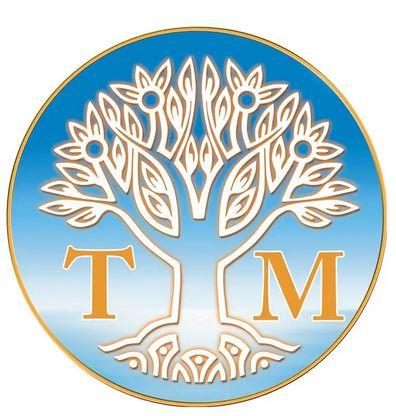Transzendentale Meditation

Transzendentale Meditation (TM) is a form of meditation that was introduced by Maharishi Mahesh Yogi in the 1950s. It is a simple, natural, and effortless technique designed to help practitioners achieve a state of deep relaxation and heightened awareness. The goal of TM is to reach a state of transcendence, or a profound inner experience of silence and stillness, where the mind is completely calm and free from thoughts, while the body remains deeply relaxed.
Key Features of Transzendentale Meditation:
-
Use of a Mantra:
-
In TM, practitioners silently repeat a specific sound or word, known as a mantra, during meditation. The mantra is given individually by a trained TM teacher and is thought to help the mind settle into a state of quiet, stillness, and expanded awareness.
-
The mantra serves as an anchor for the mind, allowing it to transcend ordinary thought processes and experience deeper levels of consciousness.
-
-
Effortless Technique:
-
One of the core principles of TM is that it should be effortless. The meditation does not require concentration or control of the mind, unlike other forms of meditation. Instead, the goal is to allow the mind to naturally settle into a calm, alert state.
-
If thoughts arise during meditation, the practitioner is encouraged to gently return to the mantra, without judgment or force.
-
-
Practice and Duration:
-
TM is typically practiced for about 20 minutes, twice a day—once in the morning and once in the afternoon. It is recommended to sit comfortably with your eyes closed during this period.
-
The practice is meant to be done in a quiet, relaxed setting to maximize its effects.
-
-
Benefits:
-
Deep Relaxation: TM is said to reduce stress and anxiety, helping individuals achieve a state of relaxation that surpasses ordinary sleep.
-
Improved Mental Clarity: Regular practice is thought to enhance focus, creativity, and cognitive function.
-
Better Health: Some studies suggest that TM can lead to lower blood pressure, improved cardiovascular health, and enhanced overall well-being.
-
Increased Self-Awareness: Practitioners often report a heightened sense of inner peace and self-awareness, as well as an increased sense of connection to their surroundings.
-
-
Training and Certification:
-
TM is taught through a structured course provided by certified teachers. The instruction typically includes an initial personal interview, followed by a one-on-one session where the teacher gives the practitioner their personal mantra. It also includes follow-up sessions and guidance.
-
Because TM is taught by certified instructors, there is a cost involved in learning the technique.
-
-
Spirituality and Philosophy:
-
TM is often associated with Maharishi Mahesh Yogi's teachings, which were rooted in the Vedic tradition of India. While TM itself is not inherently religious, it is considered a spiritual practice by some because of its connection to the idea of transcendence, inner peace, and heightened consciousness.
-
Many people use TM as a tool for personal growth, relaxation, and well-being, regardless of religious background.
-
Scientific Research on TM:
Numerous studies have been conducted on the effects of TM, and while many report positive benefits for mental and physical health (such as reduced stress and anxiety, improved blood pressure, and enhanced cognitive performance), TM has also faced some criticism. Critics have questioned the rigor and reliability of some studies, and others have raised concerns about the commercial aspects of the technique, given that it is typically taught through paid courses.
Summary:
Transzendentale Meditation is a widely practiced and accessible form of meditation that focuses on the effortless repetition of a mantra to achieve deep mental and physical relaxation. While it has been praised for its potential health benefits, the practice requires formal instruction and a commitment to regular practice.

